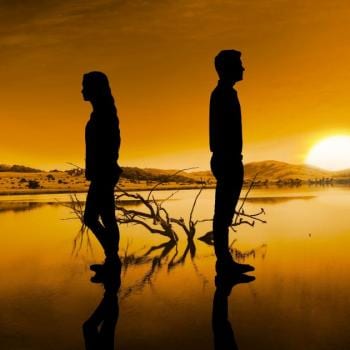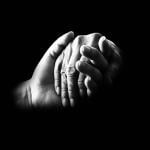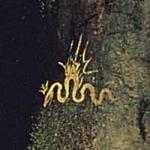
Two years ago, I embarked on my longest fictional read to date with Robert Jordan’s “The Wheel of Time.” Weighing in at almost four-and-a-half million words, this brick wall of a series is enough to make even seasoned fans of fantasy count the cost. Last week I finished book fourteen, “A Memory of Light” as I sat on my front porch and the sun dipped below the rooftops. This four-course meal of a saga fed my imagination as few books have. Its richness, its throng of characters, and its scale make it feel at times more like a second life than a story. But it also left me surprised that imaginative Christians have been so quiet about these books, especially given their countercultural treatment of gender.
Jordan’s tale follows a shepherd from the Two Rivers named Rand al’Thor as he discovers that he is the reincarnation of a Messiah-figure destined to save the universe from primordial evil. The world into which Rand and his friends from Emond’s Field embark is governed by an order of magic-users known as the Aes Sedai (who call their talent “the One Power”). They guide kings and realms against the Dark One and his twisted minions, actively preparing the nations for the prophesied Last Battle. Yet there’s something strange afoot: the Aes Sedai are all women.
So begins a story in which an essentialist understanding of gender shapes nearly every plot point. Male and female, unapologetically distinct, are at the heart of “The Wheel of Time,” driving not just the magic system, but the story. Most prominently, “the Dragon Reborn” (not actually a dragon) is destined to cleanse the male half of the One Power from the Dark One’s touch, and thereby to atone for his attempt in a past life to fight evil without help from the fairer sex.
This gendered commentary seeps into every detail. A playful antagonism between the sexes adds spice and humor to Jordan’s dialogue. His male and female characters often snipe at one another or shake heads in mutual incomprehension (“Nynaeve would never understand men,” “Mat wished he had Rand’s instincts for dealing with women”).
Yet privileged with an omniscient perspective on characters’ motives, readers can sympathize. Neither sex is always right, and neither sex is always wrong. And because of this, they need each other. In fact, the greatest works in Jordan’s magical world—both during the Age of Legends and at the climax of the story—are wrought by men and women working together. Indeed, the resolution depends on overcoming this age-old antipathy between the Dragon’s Fang and the Flame of Tar Valon (gendered symbols which together form the Yin-Yang-like seal of the ancient Aes Sedai).
I was worried this unfashionable complementarity might not make it into the conclusion. Jordan famously spent so much time crafting his nations, creeds, cultures, and characters that he died before concluding the series, leaving fellow fantasy-smith Brandon Sanderson a library of memos with which to complete the project. But the author’s vision of male and female as interdependent and immutable comes through boldly in the final three books, and brings the story to a profound close.
To understand the finale, though, you need to know about the cyclical view of time to which the series’ title alludes. It’s a view immortalized in the opening refrain of each book: “The wind was not the beginning. There are neither beginnings nor endings to the turning of the Wheel of Time. But it was a beginning.”) Yet as the story progresses, one gets the subtle sense that the Wheel may not be perfectly circular. Through countless returns, the Pattern seems to be spinning toward a true resolution—an eschaton. The actions of characters are treated as though they matter—not only for their age, but for ages “long past and yet to come.” Characters who recall their past lives, especially Rand, express a desire to improve—to shape history in the right direction.
The frequent identification of a “Creator” who set the wheel in motion also hints at an ultimate goal that gives meaning and permanence to characters’ actions. The revolutions of the Wheel don’t appear to hit a “reset” button on time. The choices of key players carry forward into the next aeon, and Jordan is clear that even the weaving of the Wheel is not immutable. Either the Dark One or the Dragon could halt time, ushering in an eternity in which choices no longer matter and in which men and women are no longer free.
In the end, Rand chooses to allow this apparently sempiternal becoming to eclipse his vision of being in which evil no longer exists. The Dark One must be sealed away, yes. But he must not be destroyed by humankind, for his existence gives them a chance to exercise moral freedom. The darkness affords the light an opportunity to shine ever brighter with each passing age. And that light, “one” though it may be, comes in two hues: male and female, Saidin and Saidar—both of which must be used in concert to banish the Dark One.
I smiled on reading that the big bad first broke free through a misguided effort by the ancients to tap a unisex energy source (“The True Power”). This turns out to be the Dark One’s own essence, and all those who use it steadily lose their minds. This fateful effort to bypass the distinction between male and female lies in the background. In the middle distance, the Dragon’s doomed attempt to vanquish evil with only male energy. And the world in which the story begins is one policed by female energy, where men who can channel are reviled and “gentled” (cauterized of their talent). Only at the climax do the characters learn to make a different choice—to embrace and not eschew the gendered metaphysics of Jordan’s universe, and to trust that “male and female he created them,” and this is very good.
The finished product is a myth of contrasts and cycles—of masculine and feminine, light and dark, waking and dreaming, creation and destruction, freedom and compulsion, death and rebirth. Like seasons perpetually overtaking one another, opposing energies drive the Wheel and weave the tapestry of the ages. Yet this dreamtime of dying-and-rising gods, of reincarnation and heroes-of-the-horn, of sly echoes of Norse mythology and a perpetually-reborn savior who grapples with the shadow points somewhere. And though there’s plenty to raise Christian eyebrows, there’s also more than enough to raise our minds to higher things—to realities our world shares with Jordan’s, and which are anything but fantasies.
Thank you, Robert Jordan and Brandon Sanderson. It was a good two years.












